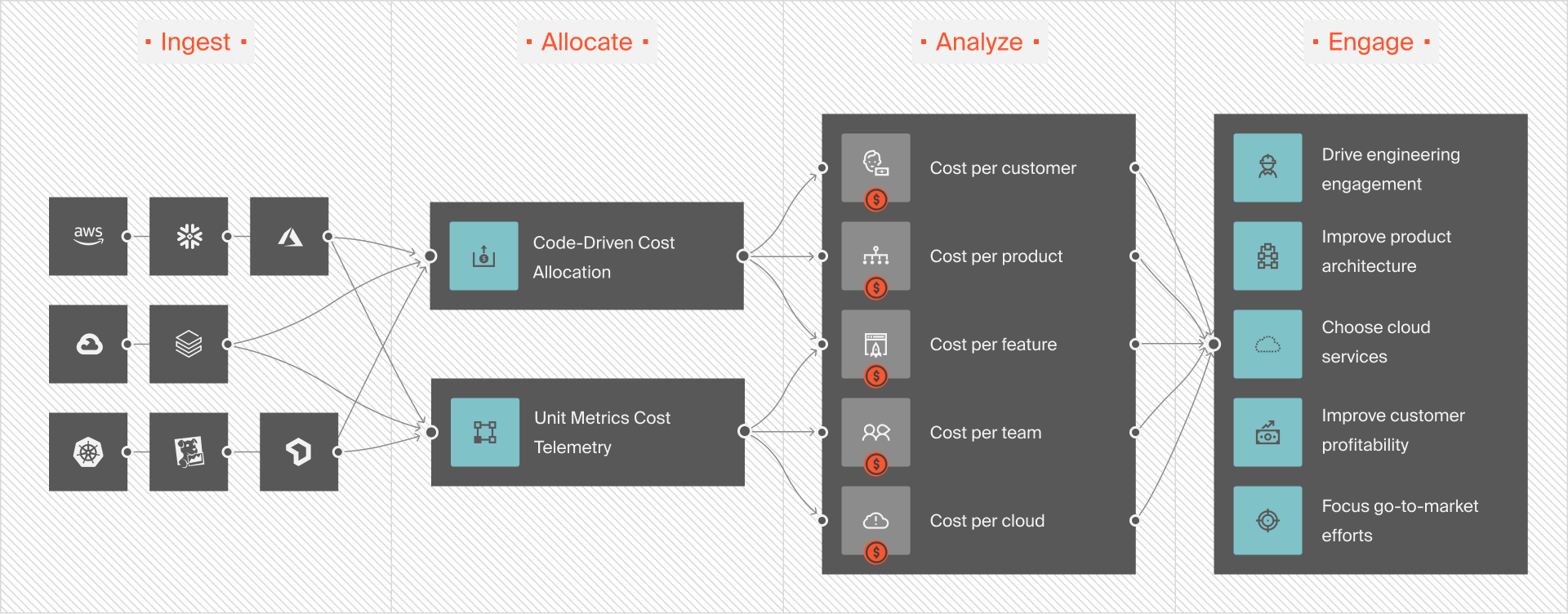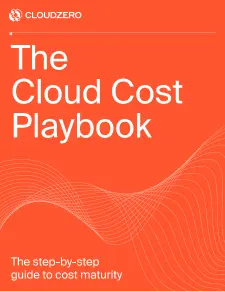Cloud waste has been costing companies billions of dollars for years now. Organizations spent an estimated 723.4 billion on public cloud services in 2025 — up from $595.7 billion in 2024.
Cloud waste continues to account for about 32% of this spend, translating to over $200 billion in potential waste.
Could you be wasting money trying to save money?
Fortunately, cloud waste is preventable in most cases. So, what causes cloud waste, and how can you minimize it now and in the future? Here are seven techniques and tactics you can use to reduce cloud waste and prevent overspending.
1. Migrate In Stages — Not Wholesale
Many companies migrate their infrastructure, data, and workflows to the cloud all at once. The problem is that a quick switch may overwhelm your engineering team.
It’s still important to give your engineers the time and space to adapt your system to a cloud environment, even if you’ve trained them to make the shift. You’ll spend this time figuring out how the new system interacts with your existing workflows. You want to detect, fix, and monitor any inefficiencies before adding more workloads to the cloud.
If not, your team may inadvertently adopt the same inefficient practices that your company had in its previous setting. This would prevent you from realizing the full savings benefits of a move to the cloud.
2. See What You Don’t Know
Often, companies underestimate the amount of wasted cloud spend they incur. But the problem begins before that: many organizations often have little to no idea how much they are spending on the cloud. The last thing you want is to lose up to 35% of your cloud budget because you can’t see your cloud budget leaking thousands of dollars every week.
To address this, you need to perform a cloud cost analysis.
If you are an Amazon Web Services (AWS) customer, you can use several free AWS native cost tools to determine how much cloud resources you consume. AWS Cost Explorer, CloudTrail, and the AWS Cost and Usage Report give you a high-level view of your overall spending.
However, these basic tools may not give you granular cost insights, such as the exact cost of a software testing project over a specific period. To slice and dice an AWS bill into unit cost insights, such as cost per customer, cost per team, and cost per deployment project, you need a cloud cost intelligence approach that will link cloud costs to key business activities.
Using such insights, you can more easily identify which cost centers to limit or reduce to decrease cloud costs — without deteriorating cloud performance or stifling innovation.
What does this look like in action?
Watch this short video to learn how CloudZero breaks down cloud spend by the metrics that matter.
3. Set Boundaries To Prevent Costly Surprises
With its auto-scaling capabilities, the cloud is a highly dynamic environment that can quickly go over your budget.
A good example is how Amazon Elastic Computing Cloud (EC2) instances work. The instances do not terminate on their own, despite completing a task. They do not end on their own, either. It is up to you to stop them manually.
But here’s the thing.
AWS bills EC2 instances per second, whether they are active or idle. EC2 instances can also scale up and out to nearly limitless capacity to handle an influx of server requests. So, if you receive thousands of visitors to your website from a viral social media campaign, the resulting AWS bill could be an expensive surprise.
To prevent such a scenario, log in to the Amazon EC2 console to view your current Amazon EC2 service quota (limits). Then, in the navigation pane, under Auto Scaling>>Auto Scaling Groups, you can set minimum, desired, and maximum capacity limits on your Auto Scaling Groups to prevent runaway costs.
4. Automate Cloud Cost Management
Using spreadsheets to calculate highly dynamic cloud bills is both inefficient and clunky.
Let’s continue the EC2 Auto Scaling example above. Your EC2 configuration would scale up and out to cover both the increase in traffic and your desired level of website performance.
Often, these kinds of scenarios play out when companies least expect them. By the time engineering or finance teams realize what’s happening, it is usually too late to reverse the cloud waste.
Instead, you’ll want to set up an automated way to detect, track, and report abnormal cloud activities before they affect costs. Using one of the top cloud cost management tools can help you here.
The best cloud cost solutions have capabilities for detecting and alerting you to cost anomalies. You can also set them to notify the right person or team in your company as soon as they detect abnormal metrics. Your team can then act quickly to prevent going over your cloud budget.
5. Find And Fix AWS Cost Drains
It’s possible to reduce your AWS cloud costs almost immediately by zeroing in on resource waste. Start by enabling continuous cost and usage reporting to identify top contributors to cloud spend. Look for idle resources, over-provisioned instances, and outdated configurations that no longer align with your needs.
You can reduce waste by:
- Shutting down unused or idle workloads after hours
- Rightsizing EC2 and RDS instances based on actual usage
- Replacing On-Demand instances with Spot or Reserved Instances
- Avoiding unnecessary compute resources altogether
- Tagging resources by environment, team, or workload for clarity. Related reads:
- Analyzing costs in a business context, such as per feature or team
Even small tweaks — such as turning off dev environments on weekends — can significantly lower your AWS bill. But it’s not just about cutting spend. Done right, AWS cost optimization helps you maintain cloud performance and innovation while staying within budget.
6. Trade Tagging For Code-Driven Allocation
AWS introduced tagging to help companies put context around their cloud spending. In reality, developing a perfect tagging strategy at scale is almost impossible based on the feedback we receive from customers.
Yet, if your AWS strategy isn’t perfect, you won’t be able to calculate your cloud costs with accuracy. Without reliable cost and usage insights, you wouldn’t know who, when, where, or what is driving your cloud costs — thus, what cost center to optimize.
Tags are one way to improve cloud financial governance, but you’ll want a more accurate and less cumbersome solution to put costs into context. CloudZero, for example, doesn’t rely on perfect AWS tags to send you valuable cost insights.
By ingesting data from multiple sources, such as your infrastructure, application performance, and Kubernetes, it enriches, analyzes, and reports it to each of your teams in a way that makes sense to each one. With such actionable information, they can make informed cost decisions with confidence and avoid going over budget.
7. Nurture A Cost-Conscious Culture
Once you implement these tips, the next step is to practice proactive cloud financial management. One way to do this is to treat cost as a first-class metric, alongside uptime and Mean Time To Recovery (MTTR).
You’d empower teams to see how their activities affect the entire organization’s bottom line if you encouraged them to measure costs proactively. A reputable cloud financial management solution that provides unit cost analysis makes this possible.
Examples of unit costs include the amount spent to support a specific customer, the cost per product feature, and the cost per DevOps team. The purpose of providing these insights to engineering would be to empower them to develop cost-effective software. Unit cost economics would help finance teams determine how to price services competitively without reporting weaker gross margins.
Reduce Cloud Spend Without Sacrificing Innovation
You can identify where, who, and what is driving your cloud costs with CloudZero. With CloudZero’s cost intelligence platform, you can break down costs by the business dimensions that matter to you, such as cost per customer, cost per team, and cost per feature.

You will also receive timely cost-reducing recommendations and cost anomaly alerts, allowing you to prevent going over budget.
With better cost visibility, you’ll be able to identify areas where you can reduce costs without compromising cloud performance and engineering innovation.
 to discover how CloudZero helps companies like Malwarebytes, Remitly, and Drift reduce cloud costs — and how we can help you do the same.
to discover how CloudZero helps companies like Malwarebytes, Remitly, and Drift reduce cloud costs — and how we can help you do the same.








